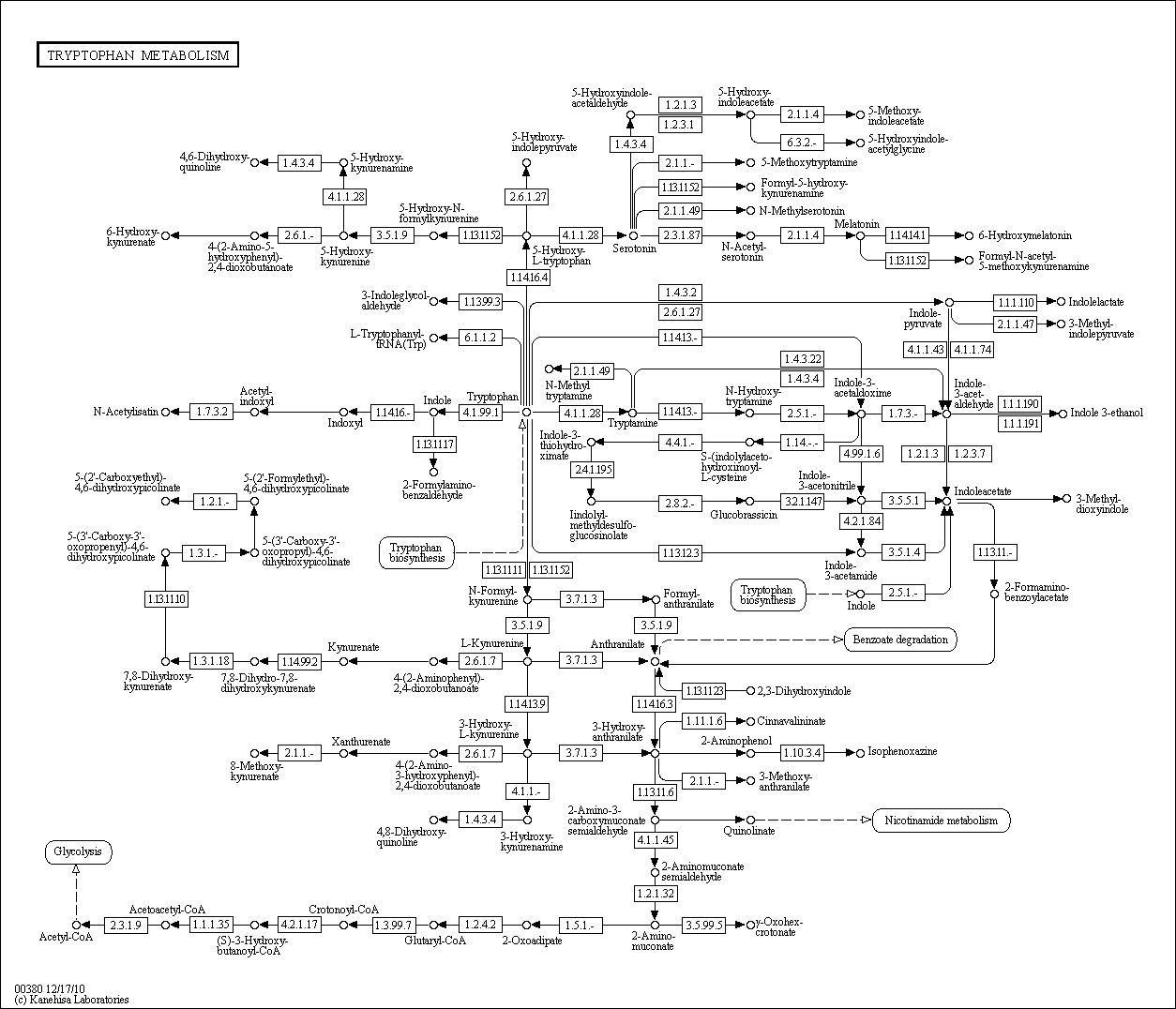Tryptophan Metabolism
Description: Tryptophan is an essential amino acid. This means that it cannot be synthesized by the organism and therefore must be part of its diet. Amino acids, including tryptophan, act as building blocks in protein biosynthesis through the action of tryptophanyl tRNA synthetase. In addition, tryptophan functions as a biochemical precursor for serotonin (a neurotransmitter), which is synthesized via tryptophan hydroxylase. Serotonin, in turn, can be converted to melatonin (a neurohormone), via N-acetyltransferase and 5-hydroxyindole-O-methyltransferase activities. Niacin is synthesized from tryptophan via kynurenine and quinolinic acids as key biosynthetic intermediates. Kynurenine is the first key branch point intermediate in tryptophan\u2019s catabolic pathway leading to 3 fates: First, kynurenine can undergo deamination in a standard transamination reaction yielding kynurenic acid. Secondly, kynurenine can undergo a series of catabolic reactions producing 3-hydroxyanthranilate plus alanine. In this reaction, kynureninase catabolizes the conversion of kynurenine into anthranilic acid while kynurenine\u2014oxoglutarate transaminase (also known as Kynurenine amino-transferase and glutamine transaminase K, GTK) catabolizes its conversion into kynurenic acid and kynurenine 3-hydroxylase \u2013 to 3-hydroxykynurenine. The oxidation of 3-hydroxyanthranilate converts it into 2-amino-3-carboxymuconic 6-semialdehyde, which has two fates, it can either degrade to acetoacetate or it can cyclize to quinolate. Most of the body\u2019s 3-hydroxyanthranilate leads to acetoacetate which is why tryptophan is also a ketogenic amino acid. An important side reaction in liver involves a non- enzymatic cyclization to quinolate then via a transamination and several rearrangements yields limited amounts of nicotinic acid, which leads to production of a small amount of NAD+ and NADP+. Source: Pathman

Related BMRB Molecules
- 2-Aminophenol
- Anthranilic Acid
- FAD
- 3-Hydroxyanthranilic Acid
- 3-(2-Hydroxyethyl)Indole
- Indole
- Indole-3-Acetamide
- 3-Indoleacetonitrile
- Kynurenic Acid
- L-Kynurenine
- 5-Methoxytryptamine
- Quinolinic Acid
- Serotonin
- Tryptamine
- L-Tryptophan
For complete information about pathway, see KEGG [map00380]
